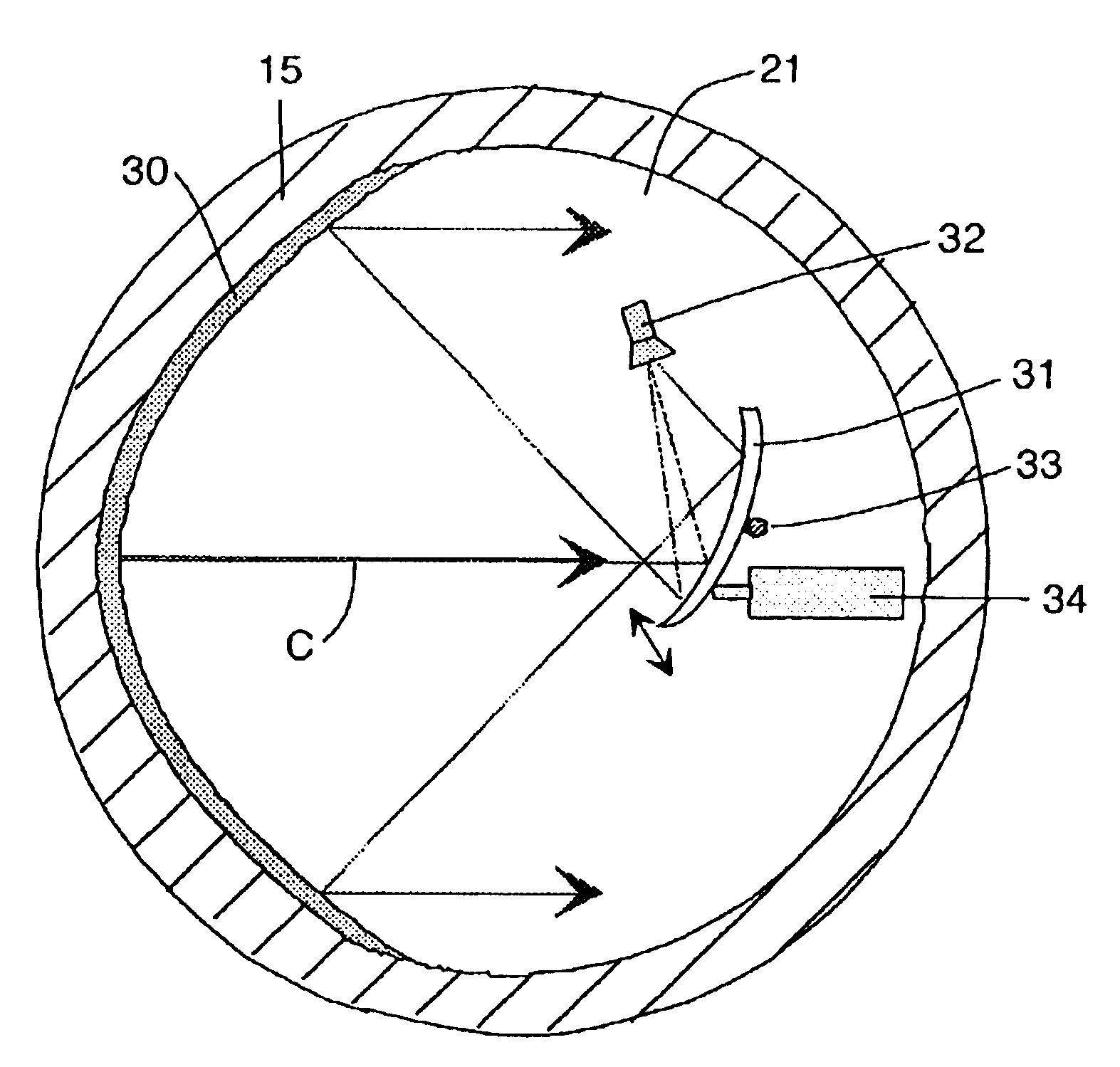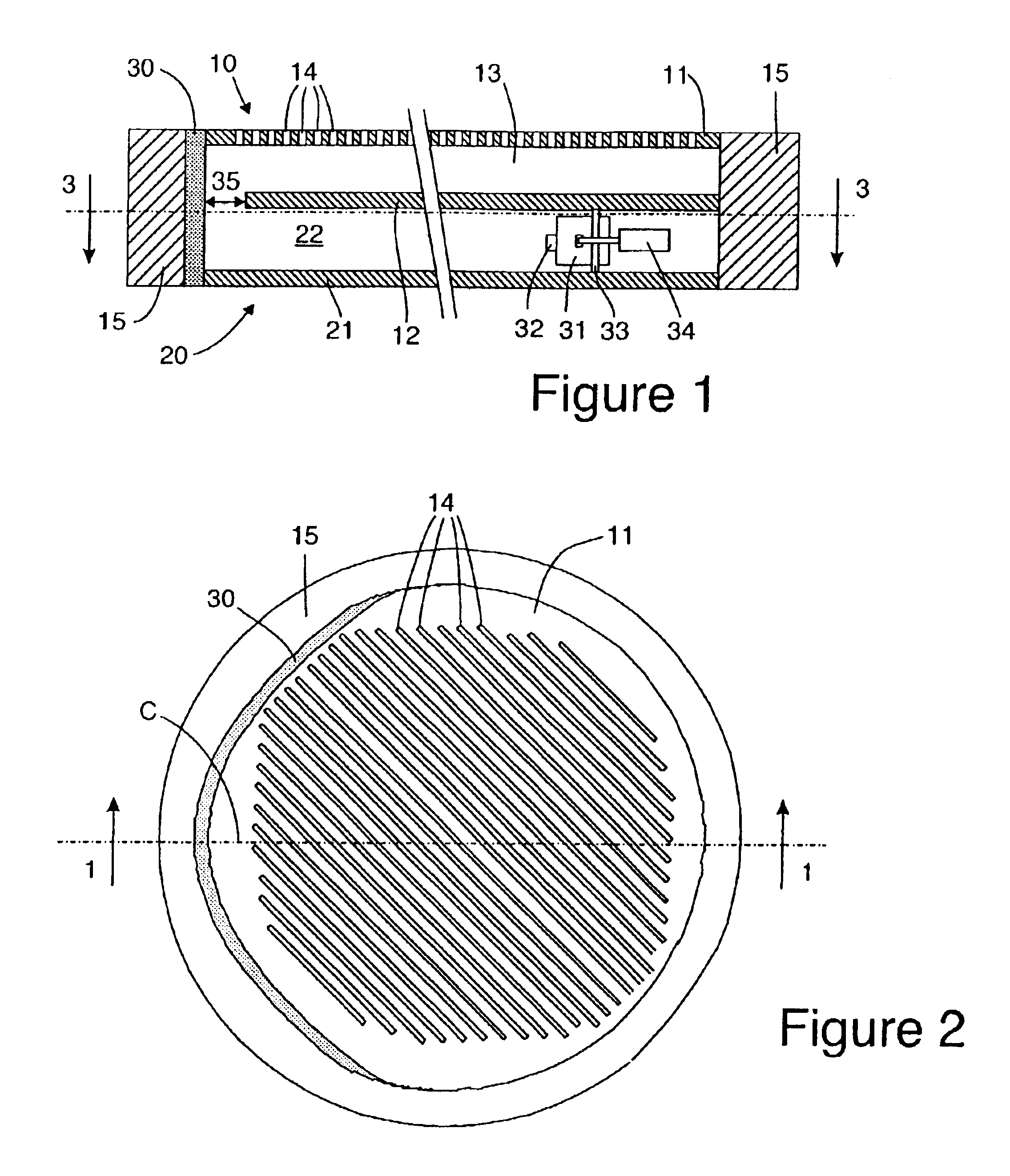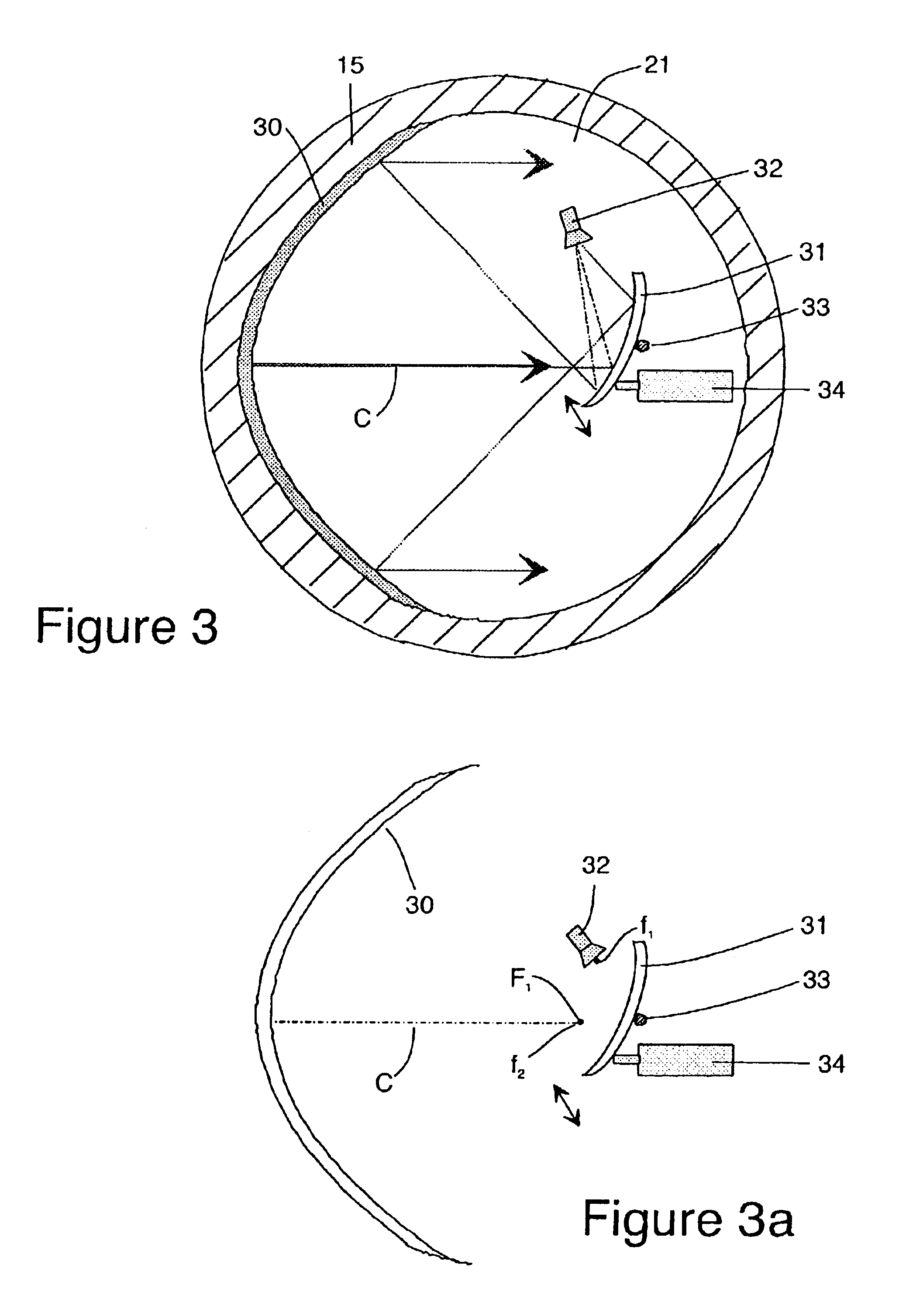Beam steering apparatus for a traveling wave antenna and associated method
a technology of traveling wave antenna and steering apparatus, which is applied in the direction of electrical apparatus, leaky waveguide antenna, antenna, etc., can solve the problems of complex mechanical construction, large antenna, and inability to achieve beam steering in a simple manner, and achieve the effect of simple construction
- Summary
- Abstract
- Description
- Claims
- Application Information
AI Technical Summary
Benefits of technology
Problems solved by technology
Method used
Image
Examples
Embodiment Construction
Referring to FIG. 1 of the drawing, therein can be seen a portion of an embodiment of a waveguide 10 for a traveling wave antenna. The waveguide 10 comprises an upper conductive plate 11 and a parallel lower conductive plate 12, separated by a dielectric medium 13. Plates 11 and 12 are preferably attached to a conductive outer wall 15. The upper plate 11 is provided with radiating apertures 14 dimensioned to provide the proper amplitude and phase distribution of the radiated energy along the length of the waveguide 10 of the antenna to its outlet end. The apertures 14 generally extend substantially across the entire width of the upper plate 11 as shown in FIG. 2. The apertures 14 are shown as rectangular slots, although other shapes are well known to those skilled in the art. The dielectric medium 13 is preferably a foam material.
Up to this point in this description, the waveguide 10 is substantially conventional and normally an energy source produces the beam or wave which travels ...
PUM
 Login to View More
Login to View More Abstract
Description
Claims
Application Information
 Login to View More
Login to View More - R&D
- Intellectual Property
- Life Sciences
- Materials
- Tech Scout
- Unparalleled Data Quality
- Higher Quality Content
- 60% Fewer Hallucinations
Browse by: Latest US Patents, China's latest patents, Technical Efficacy Thesaurus, Application Domain, Technology Topic, Popular Technical Reports.
© 2025 PatSnap. All rights reserved.Legal|Privacy policy|Modern Slavery Act Transparency Statement|Sitemap|About US| Contact US: help@patsnap.com



